WordPress vs Webflow: Which One Is Better
I first discovered Webflow when one of our developers suggested using it for a client website in the UK. Initially, I was sceptical Webflow was unfamiliar, and I wasn’t sure it could meet professional website demands. Trusting our development team, I gave them full creative freedom.
Within weeks, the website was ready, and I was impressed. The design was visually striking, the interface intuitive, and the development timeline much shorter than traditional methods. This experience led me to explore Webflow further, comparing it directly with WordPress, a platform I’ve used extensively over the years.
In this article, I share insights from hands-on experimentation, evaluating design flexibility, custom development, plugin ecosystems, SEO, hosting, maintenance, and cost. The aim: to answer which platform Webflow or WordPress is better for your next website in the UK.
Comparing Webflow and WordPress: Which One Should You Choose?
Choosing the right platform for your website is essential, as it affects everything from design flexibility to long-term scalability. Webflow and WordPress are two of the most popular options, each with unique strengths. Webflow is a hosted, visual website builder that lets designers create fully custom websites via a drag-and-drop interface, with minimal coding required. WordPress, in contrast, is an open-source CMS offering unmatched extensibility through plugins, themes, and custom coding.
To help you make an informed choice for your next website in the UK, we’ll compare both platforms across key factors including:
Custom Themes & Templates
WordPress offers an extensive library of free and premium themes, suitable for almost any business from schools and hospitals to corporate sites, freelancers, and banks. You can choose ready-made themes or fully customisable ones. Agencies can even build custom WordPress themes, though for fully bespoke websites, developing from scratch using PHP, Laravel, Next.js, or Node.js often gives better control and avoids the limitations of WordPress.
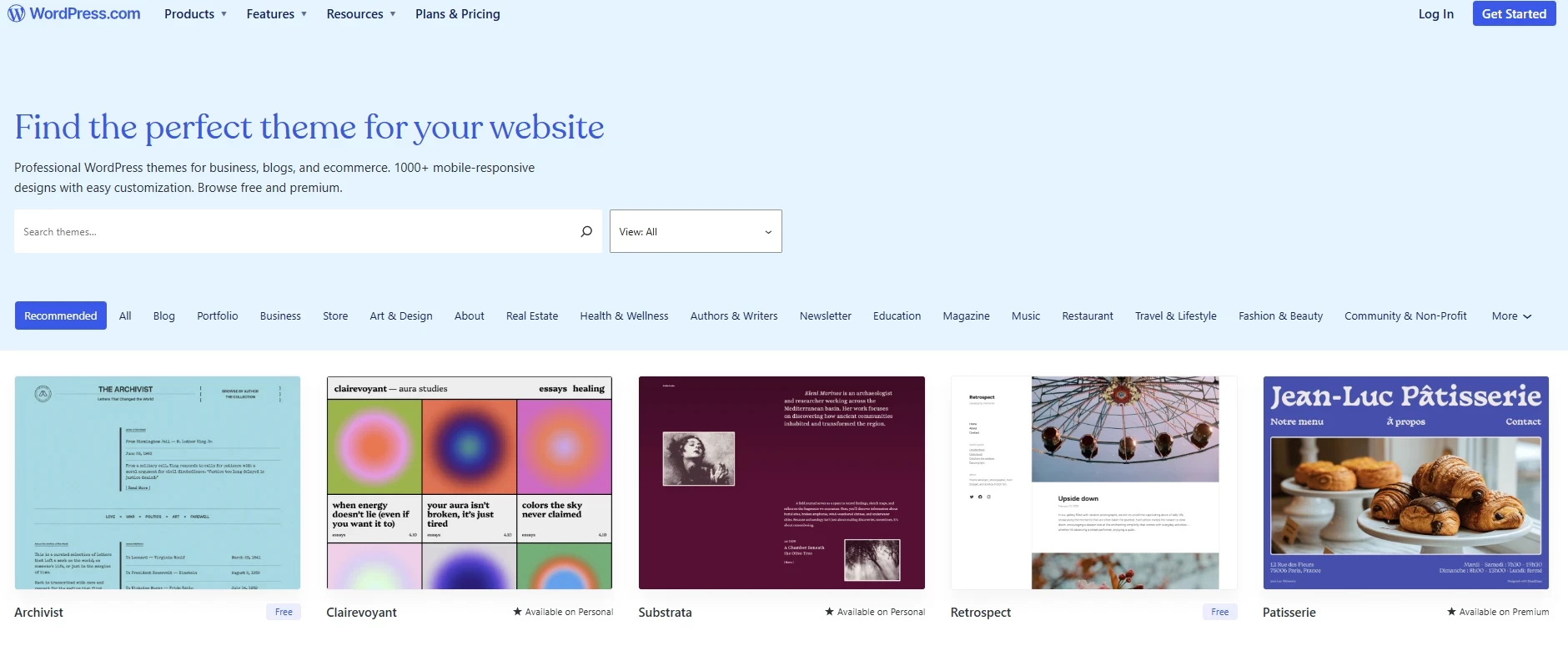
Webflow, by contrast, has fewer templates, but they are highly modern, visually appealing, and design-focused. Its powerful visual designer allows complete customisation of layouts, CSS, interactions, and animations without the risk of breaking the site. Designers can safely embed custom HTML and CSS, offering flexibility and creative freedom.
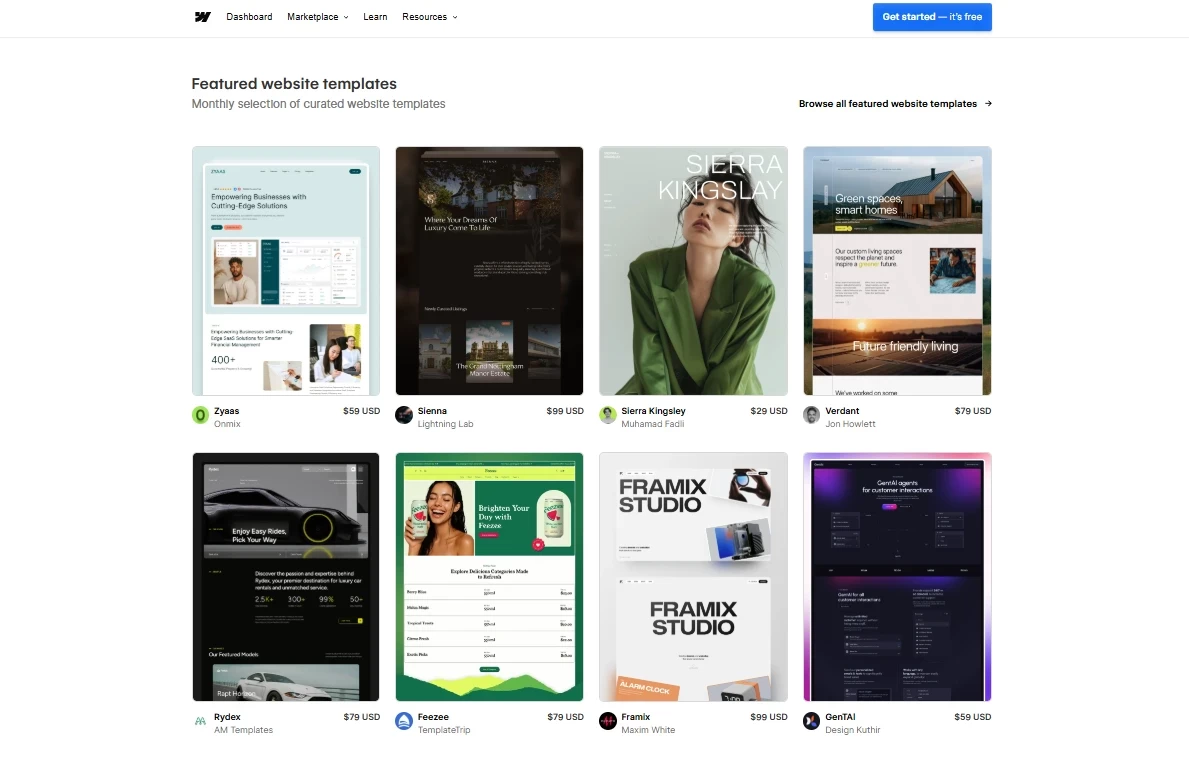
In summary: WordPress excels in quantity and variety, while Webflow stands out for quality, modern aesthetics, and design-first templates that are easy to customise efficiently.
Custom Development
Webflow lets you add your own HTML, CSS, and JavaScript directly into pages using its visual editor. This is great for small tweaks, design flourishes, or integrating third-party tools. But at its core, Webflow is a “no-code” platform, which means it has limits when it comes to deeper backend customisation. If your website needs complex functionality, advanced server logic, or intricate data handling, Webflow might not quite cut it.
WordPress, on the other hand, gives you complete control. Built on PHP, it lets developers go under the hood creating custom features, managing databases, setting up complex user permissions, and building intricate content relationships. Sure, heavy customisation can sometimes bring challenges, like plugin conflicts or the need for careful maintenance, but the flexibility WordPress offers is unmatched for complex projects.
In short: if you’re building a straightforward, design-focused website, Webflow is fast and efficient. But if you need something highly customised with advanced functionality, WordPress is the safer bet it gives you the freedom to build exactly what you need.
Plugins
When it comes to adding new features to your website, Webflow and WordPress take very different paths. Webflow doesn’t have the traditional plugin ecosystem that WordPress does. Instead, it offers a range of widgets and third-party integrations to enhance your site. These include tools for maps, CRM connections, advanced contact forms, community platforms like Pensil, banner design with Bannernote, chatbots via Ideta, and appointment scheduling through Taskio, among others. You can also embed custom code, giving developers some extra flexibility to integrate niche features. That said, most Webflow integrations are best suited for small enhancements rather than completely transforming what your website can do.
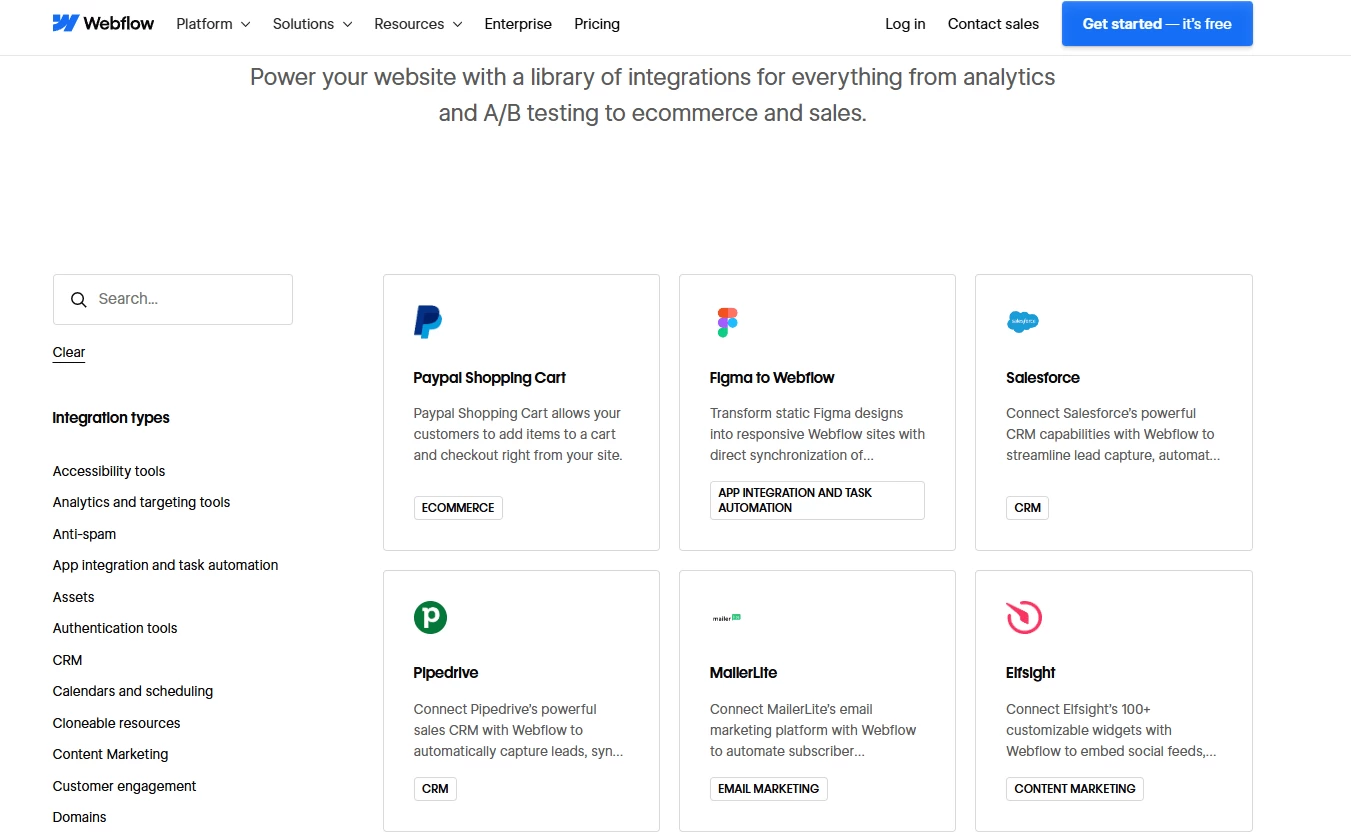
WordPress, by contrast, has an enormous ecosystem of plugins thousands of them allowing almost limitless customisation. You can install ready-made plugins or develop your own to add highly specific functionality. From custom forms and complex booking systems to advanced workflow automation, API integrations, and bespoke e-commerce features, WordPress lets you expand your website far beyond the capabilities of the core platform.
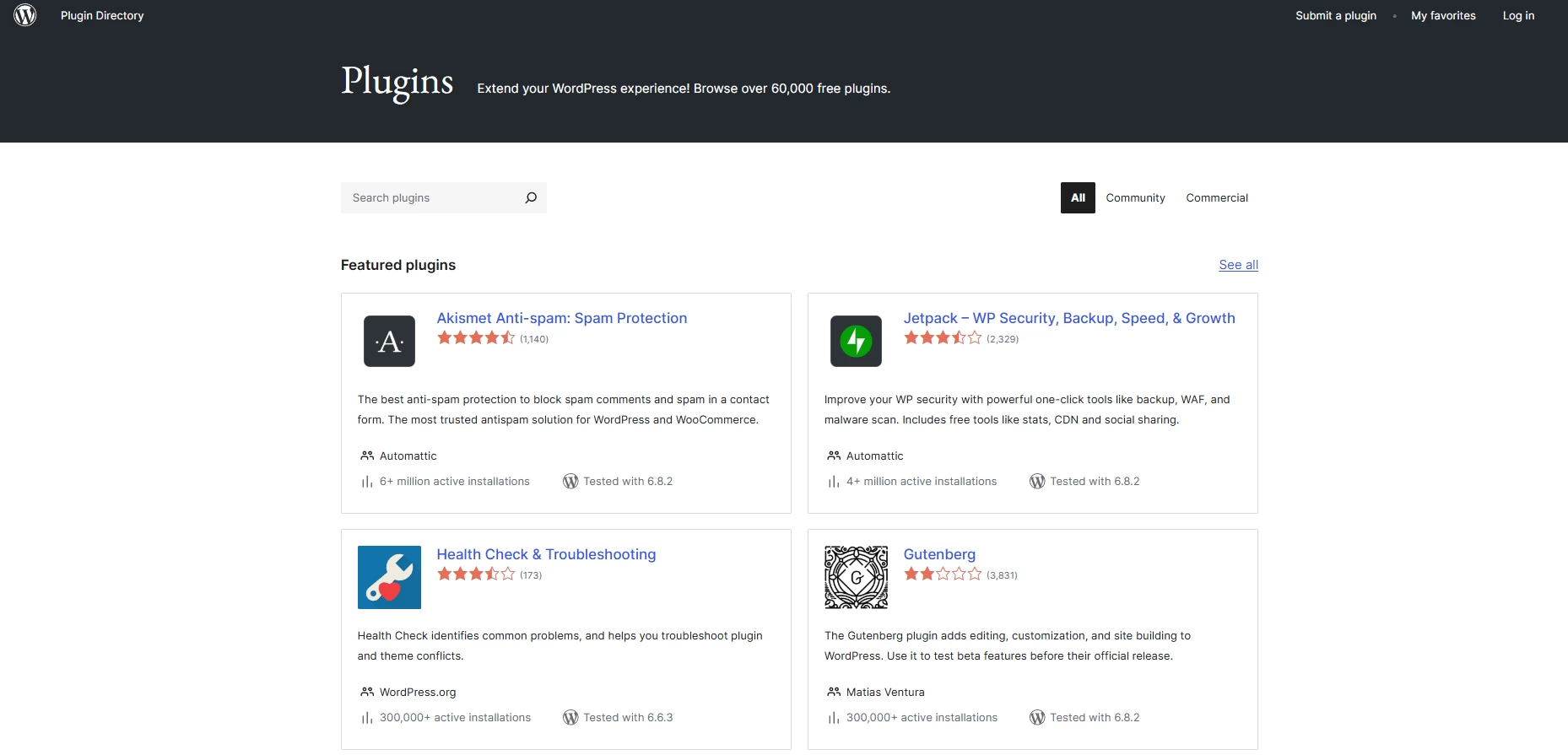
Design Flexibility
Webflow stands out as a website builder that empowers designers to bring their creative vision to life with precision and ease. Its visual, drag-and-drop editor allows complete control over layouts, grids, animations, and interactions without the need for extensive coding knowledge. Whether you want to tweak spacing, adjust typography, or create complex interactions, Webflow provides the tools to do it efficiently. The platform is particularly user-friendly for designers, making it possible to craft visually stunning websites while maintaining full responsiveness across devices.
WordPress, by comparison, has a steeper learning curve, especially when working with custom themes or plugins. While it offers high customisation potential, achieving the same level of design precision often requires additional tools like page builders Elementor being the most popular. Elementor allows you to create visually appealing designs with limited coding, but even then, it doesn’t match the intuitive design freedom and flexibility that Webflow provides.
In short, when it comes to design flexibility and creative freedom, Webflow clearly takes the lead, offering a seamless and visually oriented experience for both designers and businesses seeking a polished, professional website.
API Integration
APIs are what allow your website to communicate seamlessly with external systems. For example, if your site collects enquiries through a form, APIs can automatically send that data to your CRM. Or if you want to display live weather updates from an external service, APIs make it possible to fetch and show that information in real time.
WordPress really shines in this area. Its open-source nature and full backend access mean you can integrate almost any external system. Many web services even offer ready-made WordPress plugins, so you can connect their services without touching a line of code. And if there’s no plugin available, developers can add custom code to make the integration work, giving you flexibility and scalability for even the most complex workflows.
Webflow, on the other hand, doesn’t give direct access to backend code. This limits your ability to implement custom API integrations. You’re mostly dependent on approved third-party plugins or tools like Zapier to connect your Webflow site with external systems. While Webflow does support hundreds of integrations, it’s not as flexible as WordPress particularly when you need advanced or highly custom connections.
In short, if you want full control and the ability to integrate any system you like, WordPress is the clear winner. Webflow works well for standard integrations, but for complex or highly customised workflows, its options are more limited.
Cost
WordPress and Webflow follow very different pricing approaches, and understanding these can help you plan your website budget more effectively.
WordPress itself is free and open-source, but running a fully functional website comes with extra costs. Premium themes typically range from £20 to £80, while individual plugins can cost anywhere between £8 and £80 each. Then there’s hosting, backups, security, and ongoing maintenance these can easily add £40 or more per month. For larger or highly customised websites, costs can rise further depending on your requirements and the level of developer support you need.
Webflow, by contrast, lets you design and prototype websites for free, but publishing a live site requires a hosting plan. Premium templates usually cost £40–£80, and hosting plans start around £25 per month, with higher-traffic sites costing more. For example, I personally pay around £80–£90 per month for a high-traffic client site on Webflow. The advantage is that Webflow includes hosting, security updates, and maintenance in the subscription, giving you a predictable, all-in-one cost with no surprises.
In short, if you’re focused on keeping costs low, WordPress is generally more economical, especially for smaller websites. Webflow, however, offers a simplified, all-inclusive pricing model that, while slightly higher, ensures your site is secure, maintained, and hosted without any extra effort.
Web Hosting
When it comes to hosting, WordPress and Webflow take very different approaches, each with its own advantages and trade-offs.
WordPress gives you incredible flexibility. You can choose a managed WordPress hosting provider, where the provider takes care of installation, updates, backups, and security, giving you a mostly hands-off experience. If you’re technically inclined, you can even host your WordPress site on cloud platforms like AWS, Google Cloud, or DigitalOcean, allowing full control over server configurations and performance optimisation. In the UK, popular managed WordPress hosts include WP Engine (£20–£50/month), Kinsta (£25–£70/month), and SiteGround (£8–£25/month). With so many hosting options and control panel solutions like cPanel, WordPress lets you tailor your hosting environment exactly to your needs.
Webflow, on the other hand, is a fully hosted platform. Hosting is built into the service, so server maintenance, security updates, and performance optimisation are all handled for you. Pricing depends on website traffic and resource needs standard plans start around £20–£25/month in the UK, while high-traffic business sites can cost £80–£90/month. You won’t be able to tweak server settings or manage caching yourself, but Webflow servers are fast, reliable, and optimised specifically for the platform.
From my experience, Webflow hosting is impressively smooth and hassle-free. I did have a small hiccup when a client’s payment failed due to a credit card issue, and the website was temporarily suspended without a grace period. While inconvenient, Webflow’s support team quickly resolved the matter. Overall, it’s a reliable and convenient solution for those who want excellent hosting without the technical headaches.
Maintenance
WordPress websites rely heavily on plugins to extend functionality, offering everything from e-commerce solutions to advanced forms and SEO tools. While this plugin ecosystem is a major strength many of them free or reasonably priced it also introduces potential maintenance challenges. Each plugin can conflict with others, require regular updates, or occasionally break the website after WordPress core updates. From my experience managing multiple WordPress sites, these maintenance issues, combined with occasional security vulnerabilities, can become a significant burden, especially for high-traffic or complex websites.
Webflow, on the other hand, handles all maintenance automatically. Hosting, backups, server monitoring, and platform updates are fully managed, so you never need to worry about plugin conflicts, patching vulnerabilities, or website downtime caused by updates. Everything runs smoothly behind the scenes, allowing you to focus solely on design and content.
From a maintenance standpoint, Webflow clearly takes the lead, offering peace of mind and significantly reducing ongoing technical overhead.
SEO Features
Webflow comes with a solid set of built-in SEO tools you can manage meta titles and descriptions, implement Schema markup, generate sitemaps, configure robots.txt, and set up 301 redirects all without extra plugins. For small to medium sites, it covers most SEO needs efficiently.
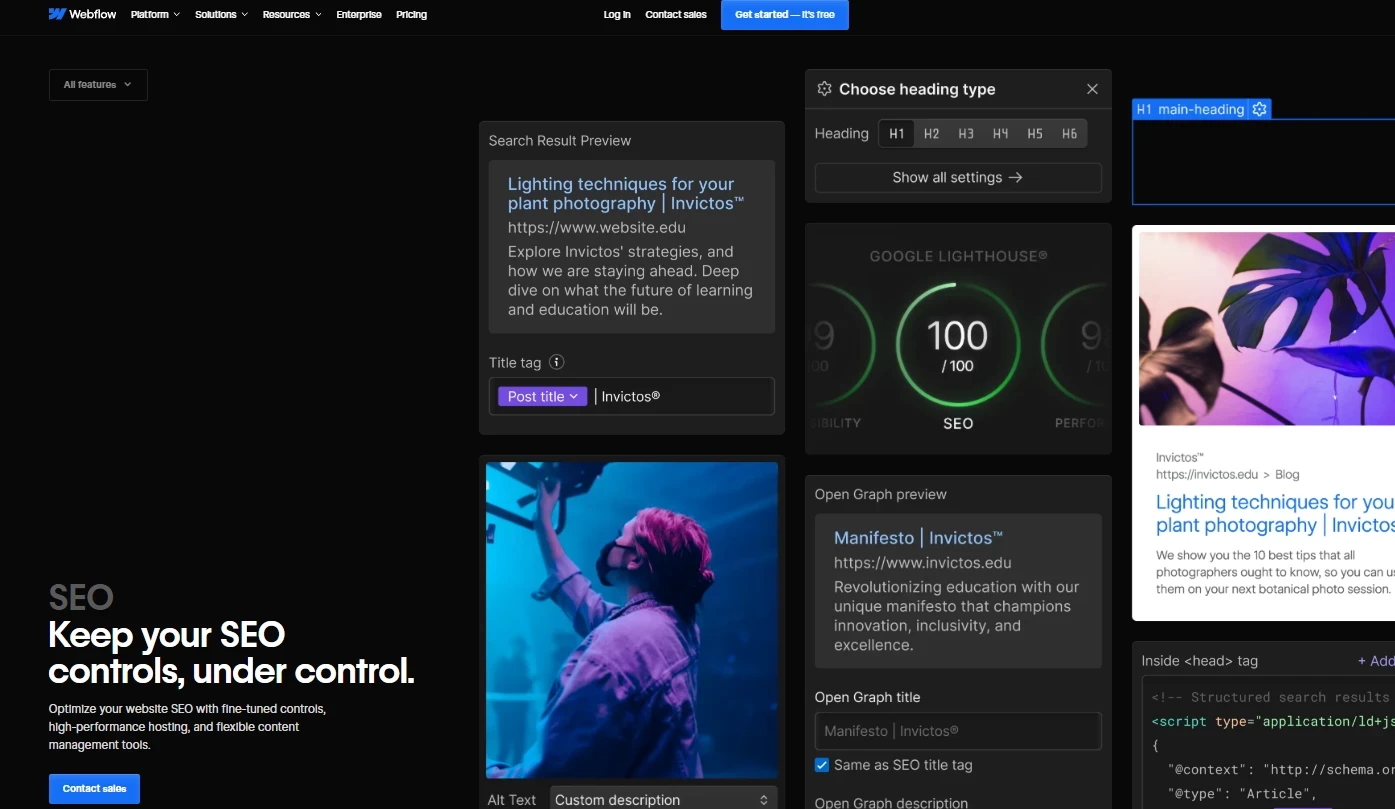
The one drawback I’ve noticed is the limited access control for SEO teams. To make SEO changes, you often need to grant CMS access, which can be risky if someone accidentally tweaks the designer interface or layout. A separate SEO management interface would make this much safer.
WordPress, on the other hand, offers unmatched SEO flexibility. Plugins like Yoast SEO or All in One SEO handle standard SEO tasks and go further content analysis, internal linking suggestions, canonical tags, schema management, and Google Search Console integration. Teams can optimise SEO without touching the site’s design, which is ideal for complex or large-scale projects.

In short, Webflow makes SEO simple and effective for smaller sites, but WordPress provides the depth, control, and collaboration options needed for advanced SEO strategies.
Version Management
Webflow offers a clean, user-friendly version management system. It includes autosave, automatic backups, and page-level versioning, allowing you to save drafts and share live previews with clients or team members before publishing. Restoring a previous version is simple Webflow keeps automatic backups that can be reverted with a single click. While perfect for most design and content workflows, it doesn’t match the full control of Git-style versioning used in professional development environments.
WordPress takes a more flexible approach, but most version control relies on plugins or hosting-provided backup solutions, often with additional costs. There’s no native, seamless system setting it up usually requires manual configuration or third-party tools.
In short, Webflow excels in ease and reliability, giving designers and content teams a smooth, hassle-free workflow. WordPress offers greater flexibility for developers but comes with extra complexity and management effort.
Security
Webflow takes the stress out of website security. Every site comes with a free SSL certificate, is hosted on AWS with built-in DDoS protection, and receives automatic software updates. With no traditional plugin system, the risk of vulnerabilities is lower, and regular backups provide an extra safety net. Essentially, Webflow handles most security concerns for you, making it ideal for businesses that prefer a low-maintenance, worry-free setup.
WordPress offers more flexibility but requires a hands-on approach. While numerous security plugins exist, maintaining a secure site is largely the responsibility of the owner or developer. Misconfigured plugins or a reliance on multiple third-party tools can create vulnerabilities, making continuous monitoring and expertise essential.
In short, Webflow wins for hassle-free security, while WordPress demands ongoing attention to keep your site safe and secure.
Ownership of Your Website
Webflow is a hosted platform, which means your website lives on their servers. While you can export a static version and host it elsewhere, doing so comes with trade-offs: you lose access to Webflow’s visual builder, dynamic content features, and seamless CMS integration. In short, much of what makes Webflow convenient and powerful only works if you stay within their ecosystem.
WordPress, on the other hand, offers complete ownership. Being open-source, it lets you host your site anywhere, migrate freely, and customise every aspect without restrictions. For businesses or developers who value autonomy and long-term control, WordPress is unmatched, giving you full freedom that a hosted platform like Webflow simply can’t provide.
Market Share
Based on the latest 2024 data, WordPress continues to lead the web development world by a wide margin. It holds around 63% of the CMS market and powers approximately 43% of all websites globally. This massive adoption makes it the go-to choice for businesses, agencies, and developers, far ahead of platforms like Shopify, Joomla, or Drupal. Its popularity also means there’s a huge ecosystem of developers, plugins, and support available.
Webflow, by contrast, hasn’t yet carved out a significant slice of the global market and is often missing from major CMS rankings. That said, it’s steadily gaining attention among designers for its intuitive visual builder and modern design-first approach. While its market presence remains smaller, the growth trend is promising, and Webflow could see broader adoption in the coming years.
If your focus is on reliability, community support, and proven long-term stability, WordPress remains the safer choice. Webflow shines in creativity and design freedom, but its market footprint is still emerging.
Customer Support
When it comes to customer support, Webflow stands out as the clear winner. Their support team is highly responsive and easily accessible through multiple channels. In our experience, whenever we encountered issues with websites hosted on Webflow, we received prompt assistance. It was straightforward to connect with a real human support representative, discuss the problem, and resolve it quickly a level of support that adds significant peace of mind.
WordPress, on the other hand, doesn’t offer direct support from a central company. You largely rely on community forums, documentation, and third-party agencies for help. While the WordPress community is vast and helpful, getting immediate, personalised support especially for enterprise-level websites can be challenging.
If timely, reliable customer support is a priority for your business, particularly for high-stakes or enterprise projects, Webflow is the safer bet.
WordPress vs Webflow – Which is Better for Your Website?
Choosing between WordPress and Webflow ultimately comes down to your website goals, technical skills, and design priorities. Both platforms are popular in the UK, but they cater to different types of users and needs.
Why WordPress Works Well in the UK
If you want a mature, reliable platform to launch your website quickly, WordPress is a solid choice. Its massive ecosystem of plugins and themes gives your website almost unlimited features and customisation options. Plus, the UK has a thriving community of experienced WordPress developers and agencies ready to help you build, manage, and optimise your site.
Key advantages of WordPress in the UK:
- Access to thousands of plugins, opening up endless possibilities
- Extensive library of themes and templates for virtually every industry
- A large network of skilled UK developers and agencies
- Advanced customisation using PHP for complex features
Potential drawbacks:
- Maintenance can be tricky due to plugin updates and conflicts
- Security relies heavily on proper plugin management and regular updates
Why Webflow Might Be the Right Fit
If your priority is creative control and visual design, Webflow is an excellent option. Its drag-and-drop visual builder allows precise design control, responsive layouts, and smooth animations. Hosting, security, and backups are all handled by Webflow, providing a streamlined, worry-free experience.
Key advantages of Webflow in the UK:
- Powerful visual builder for full creative control
- Hosting, server maintenance, security, and backups included
- Built-in versioning, responsive design tools, and SEO features for a smooth workflow
Potential drawbacks:
- Fewer experienced Webflow developers available in the UK
- Limited custom coding options for advanced functionality
- Smaller template library compared to WordPress
- Hosting is tied to Webflow’s servers
- Advanced security features may require expensive Enterprise plans
When to Consider Custom Development
Both WordPress and Webflow have limitations if your site requires highly customised or complex functionality. For such projects, consider custom website development using technologies like PHP, Laravel, Next.js, or Node.js. While the upfront effort is higher, a custom-built website provides complete flexibility, scalability, and long-term benefits.
For over 20 years, SpiderWorks has been a trusted partner for WordPress and Webflow development in the UK, delivering high-quality websites to clients across India, the UAE, and beyond.
Whether you’re leaning towards a WordPress website UK or a Webflow website UK, the right choice depends on your technical skills, design goals, and long-term plans. Align your platform choice with your vision, and you’ll set your website up for success.
